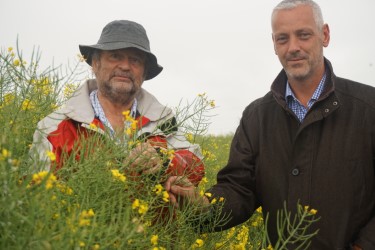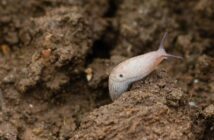Getting OSR up and away in the autumn is critical to the success of the crop, claims Lee Bennett, head of seeds for Openfield.
In light of the pressures on OSR at the start of the season from cabbage stem flea beetle, black-grass and slugs, an OSR variety that has a good strong growth habit in the autumn gets a head start, there’s no question about it, he says.
“If OSR doesn’t grow you can’t do anything with it, but you can control luxurious growth so it’s always better to look for a variety that is going to give you a crop at the end of the season.”
As head of seeds for Openfield, Mr Bennett visits many trials around the country looking at pipeline and current varieties. Varieties of interest are then placed into Openfield farmer trials.
“These trials are a good test ground for looking at OSR varieties two or three years before commercialisation. Generally they will all be top yielders, so its differences in agronomics that I want to pull apart. I’m looking for characteristics that will make the crop easier to grow.”
John Hawthorne of Flawbrough Farms, Flawborough in Nottinghamshire has hosted Openfield OSR trials on his farm for ten years and believes that the insight it gives him into how varieties perform in-situ is invaluable.
“In this way I can find out which varieties suit our heavy clay soils, our way of farming and the chemistry that we use. Resistant black-grass now dictates a lot of what we do on the farm starting with variety choice, and the trials give me a clear indication of how competitive varieties are from the start.”
With 2,000 hectares to look after either of owned or contract farmed land, Mr Hawthorne has been growing OSR since 1976. “Since then it’s always been predominantly wheat followed by OSR, but recently we have broadened this out into a rotation that includes winter barley and spring beans, so that we can really start to deal with the challenging resistant black-grass across the farm.”
Of the total OSR area grown at Flawbrough Farms, 60-70% is down to hybrid varieties as they tend to yield better as a result of their vigour and pod shatter resistance, says Mr Hawthorne.
Lee Bennett introduced the Limagrain hybrid Aquila to Flawborough Farms a year ago after seeing the variety in trials.
It was visiting the Limagrain breeding trials when he first saw the new hybrid from its UK OSR breeding programme, Aquila.
“Walking through about 6,000 anonymous plots, this particular variety stopped me dead in my tracks – it was vigorous and looked really good – in fact it demonstrated a growth habit similar to Extrovert which is well known for its strong autumn and spring growth habit – and has been hard to replicate in any of the new varieties – until Aquila.“
On this basis, Aquila was introduced into the Flawborough OSR trials in 2015, and is now in its second year of being grown as a commercial crop, alongside four other varieties, Alizze, Campus, the Clearfield variety Veritas and Dariat.
Although Mr Hawthorne prefers to delay drilling until late August early September because of the risk of lack of moisture, he has to balance this with earlier drilling to combat flea beetle damage.
“I like to have a range of varieties that give me a spread of drilling and harvest dates.”
“Aquila can go in earlier as it gets up and away quickly, but is stiff strawed so can cope. This year we will look to drill early where OSR is following barley.”
OSR is drilled using a Horsch Sprinter 12-metre drill straight into chopped straw, with as little movement of the soil as possible to reduce black-grass germination.
” I don’t want to be able to see that I have drilled into a field!”
Recommended on the E/W AHDB List, Aquila has a gross output of 108% of controls, above that of Wembley 107% and Incentive 106%.
In the 2016 Flawborough harvest results Aquila yielded 4.87t/ha, and combined with its high oil output (45.7%) produced a gross output of £1467/ha, just £1/ha behind Campus and well above Alizze at £1345/ha. (Based on an OSR price of £280/t)
Aquila’s yields are backed up by an AHDB resistance rating of 8 for phoma (stem canker), as well as a very good rating of 6 for light leaf spot.
“Genetic defence against light leaf spot is crucial to a successful crop; the disease is now widespread across the UK and we no longer have the chemistry needed to control it. A good phoma resistance allows growers to focus on a timely LLS fungicide programme, with some compromise on the early autumn phoma spray, under moderate infection conditions,” says Mr Bennett.
He considers pod shatter resistance to be a very important characteristic in OSR, as those varieties that carry a high degree of pod shatter resistance, such as Aquila, can make a real difference to seed losses both before and at harvest, and reduce volunteers in the following crop.
“When looking at what Aquila has to offer, the variety is a complete package and readily deserves very strong consideration when deciding upon the variety mix for planting in autumn 2017.”




